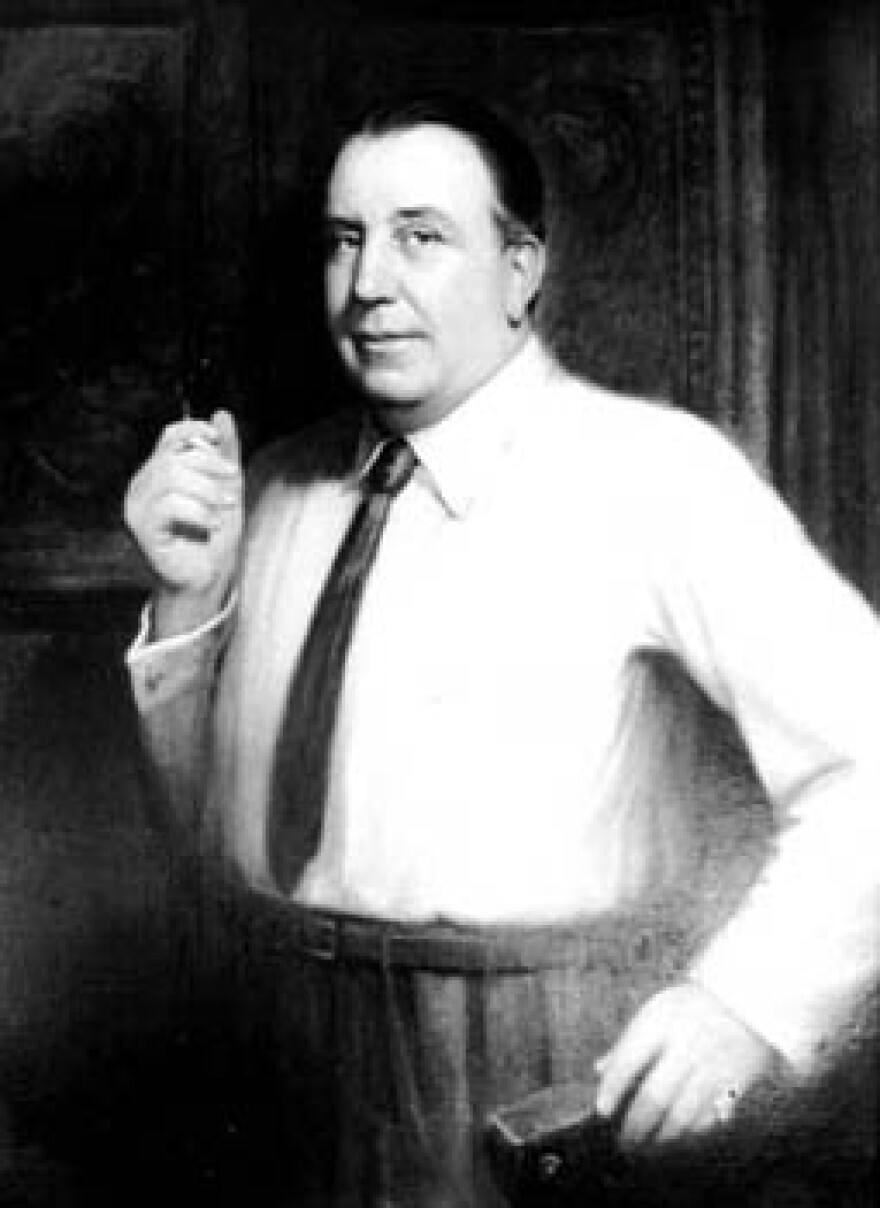The architecturally curious have just a few more weeks to see an exhibit chronicling the life and legacy of the man credited with creating the “Palm Beach style” – the stucco, red-roofed Spanish Colonial Revival architecture now prominent along the Florida coast.
The small but packed exhibit at the Historical Society of Palm Beach County includes furniture, tiles and other construction pieces produced at Addison Mizner’s manufacturing company, Mizner Industries. Mizner, who worked in Palm Beach County during and after World War I, opened his own supplier so he could create the materials he wanted.
Mizner was a “bon vivant,” traveling frequently and picking up many trades before and after he gained fame as an architect. He often walked around with a monkey on his shoulder, and occasionally also a macaw parrot. His favorite monkey, Johnnie Brown, has a headstone at his grave, and the monkey’s hat is on display in the Historical Society’s exhibit.
In 2017, Graham Brunk, president of the Palm Beach County Library Association, published an article referring to Mizner as "the gay father of South Florida architecture."
"While most histories of Mizner simply ignore his sexuality, pop culture has taken notice," Brunk wrote. "In 1999, Stephen Sondheim and John Weidman wrote a musical titled “Road Show,” which told the story of Addison Mizner and his brother Wilson Mizner, from their adventures during the Alaskan Gold Rush to the development of Palm Beach and Boca Raton."

Addison Mizner designed more than 100 buildings in the county, though many have been destroyed.
His Spanish Colonial Revival or Mediterranean Revival style remained, though, said exhibit docent Matina Nimphie.
“You think of the red-barrel roof tiles and the arches, that was Mizner,” she said. “What he built was suited to our climate, just like the Mediterranean area.”
His first major commission, and one of few still standing, is the exclusive Everglades Club. Built in the last year of World War I, it was intended as a hospital for the wounded called the Touchstone Convalescent Club. When the war ended prior to completion, it instead opened as a private club.
When Boca Raton incorporated as a city in 1924, it named Mizner its city planner. He drew up a master plan and recruited famous friends – including Irving Berlin, Elizabeth Arden, Paris Singer and T. Coleman du Pont – to join the board of his new Mizner Development Corporation. The corporation went bankrupt a few years later, leaving much of Mizner’s grand plan unrealized.
Boca Raton's original City Hall, current home of the Boca Raton Historical Society and Museum, began as his project, though it was completed in a more modest style after he lost control post-bankruptcy.
He also designed a wing of the current Boca Raton Resort and Club, built then as a stand-alone smaller hotel called the Ritz Carlton Cloister Inn. Its website suggests guests visit a shopping area called Mizner Park just outside the resort.
The exhibit on Mizner’s legacy will run at the Historical Society of Palm Beach County, 300 N. Dixie Highway, West Palm Beach, through June 29th. Admission is free.

